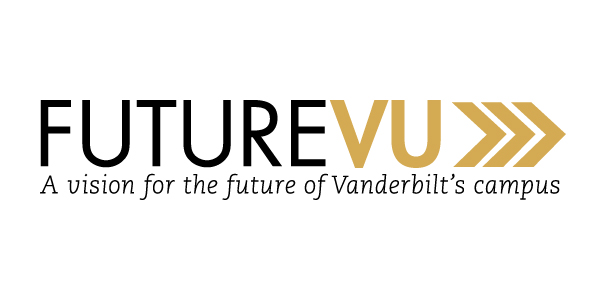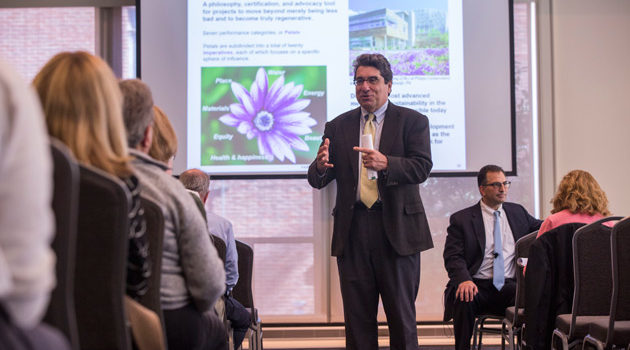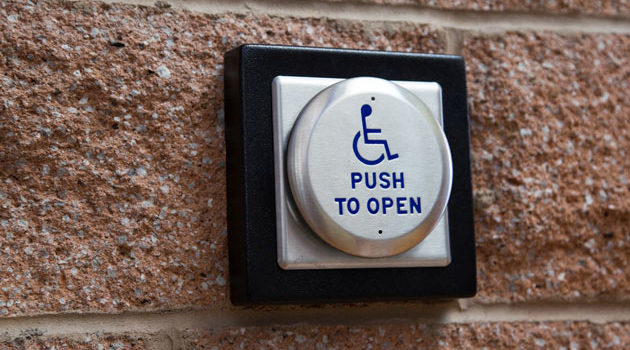Accessibility
FutureVU presents the opportunity for the university to clearly contextualize inclusion in the built environment. Through careful space design, the university continues to develop and promote welcoming environments for community members to share differences. FutureVU provides for the creation of inclusive centers, places where differences may converge and opportunities to make healthy connections are found, while also promoting social interaction of Vanderbilt’s diverse population.
Accessibility Master Plan
In the May of 2017, the university launched a comprehensive accessibility study with the long-term goal of making indoor and outdoor areas accessible and inclusive for all members of the Vanderbilt community. The first step of this process included critically assessing and documenting the different accessibility features on campus. A student work force inventoried and gathered pertinent data regarding existing conditions of the built environment. Vanderbilt Facilities, along with an external consultant, imported the collected data into a GIS platform that is integrated with VU technologies and abilities. This virtual information constitutes the authoritative database for accessibility and other issues (gender neutral restrooms, lactation rooms, showers, etc.), and will be made available to all university departments and organizations for appropriate and responsible use. VU Facilities will manage and update this database as standard operating procedure as changes occur to the built environment resulting from on-going remodels and improvements.
The university also launched the Advisory Accessibility Task Force (AATF). Task force efforts resulted in the completion and endorsement of an Accessibility Master Plan, the culmination of a year-long planning process that included a variety of stakeholders across the Vanderbilt campus. The document articulates goals, describes the data collection process, outlines additional identified needs, reviews standards for accessible design and outlines improvements, describes the prioritization process for accessibility improvements to be made, and provides a variety of exhibits.
To review the executive summary of the master plan, please click here.
The Accessibility Master Plan outlines over 1200 exterior locations on campus needing accessibility improvements, and over 4000 points on the interior of buildings. The facilities team began addressing these accessibility points, and initial progress is outlined on the progress page of the FutureVU site.
Accessibility Master Plan Road Show
The Accessibility Master Plan Road Show is a presentation that describes the master planning process, outcomes and next steps. Members of the Advisory Accessibility Task Force are available to present to groups on campus if interested to hear more about these efforts. If you would like to request a road show presentation for an upcoming meeting, please contact plantoperations@vanderbilt.edu and a staff member will direct you to an administrator who is available to present.
Design Principles
Creating more diverse and inclusive spaces on campus is a priority of the university and embedded in the FutureVU principles. As new building projects are identified, accessibility and inclusiveness are important tenants and will be integrated into design guidelines.
West End Neighborhood
An example of this at work is the West End neighborhood projects currently in development. Creating spaces to bring different groups of people together to foster community, such as new contemplative and green spaces, is integral to the design of the West End neighborhood. A new NPHC house, that is more central within the neighborhood, as well as community event space available for all students, were highlighted additions to the neighborhood. In addition, traveling from Alumni Lawn to West End neighborhood previously included many obstacles to pedestrians and a limited number of accessible paths. Updating the neighborhood design to address these issues is key to ensuring the university is enhancing accessibility in accordance with the recommendations from the AATF. All updated pathways are now accessible as a part of the neighborhood development.

Peabody Neighborhood
Another example of incorporating accessibility-related design principles into building projects were the Peabody renovations. The Peabody campus, and the majority of its buildings, are historic and are currently not all designed to reflect the university’s inclusive values. As the design team considered renovations to Mayborn and Home Economics, the following elements were incorporated into the future design of the renovated buildings, which includes a connector between the two, to better meet the needs of all of the Vanderbilt community members:
- A multi-stop elevator will be added in the new connector building, which provides accessibility to all floors in both buildings. There will be no difference in regards to access for a person with a disability or a person without a disability. Everyone will use the same route to enter the building and access all floors by the same means.
- A thorough examination of all relevant items such as accessible restrooms on all floors of each building, door hardware, restroom fixture locations, signage, water coolers, and exterior access will ensure that any person with a disability is able to take full advantage of all amenities of the building.
- As exterior grading is reworked, slopes will be eased to make the exterior access around the entire site more accessible for everyone.
Fleming Yard
Fleming Yard, the outdoor space between Alumni Lawn and Sarratt Student Center, was redesigned and upgraded in the summer of 2019. The redesign was a culmination of collaborative efforts between students, faculty and staff. After listening to students and other university stakeholders during FutureVU feedback sessions, the Division of Administration partnered with Professor of the Practice in Civil and Environmental Engineering, Lori Troxel, to incorporate students into the planning process for creating and maintaining sustainable, accessible and park-like environments on campus. Students offered their research, ideas, feedback and design concepts for the Fleming Yard area, which were then merged into a comprehensive proposed final design. The proposed design became a reality and opened fall semester 2019. While there are a number of sustainable features in the upgraded Fleming Yard space, one key feature is accessibility. A variety of accessible pathways and routes are offered throughout the entire space, and upgraded accessible furniture arriving later fall of 2019, will ensure all can enjoy the redesigned area.






